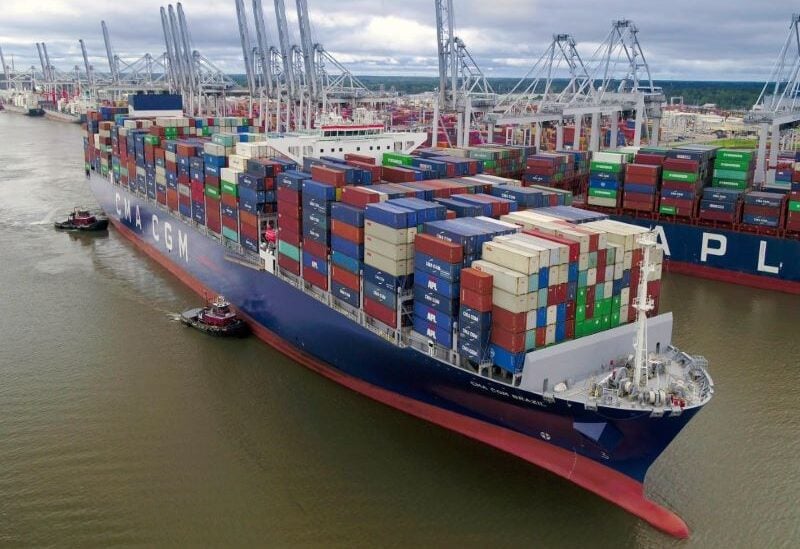
US Port
Inflation in the United States has skyrocketed to its highest level in four decades in the last year, slamming American consumers, wiping out pay rises, and strengthening the Federal Reserve’s determination to begin hiking borrowing rates across the economy.
According to the Labor Department, consumer prices rose 7.5 percent last month compared to the previous year, the largest year-over-year increase since February 1982. Shortages of goods and employees, large amounts of public help, ultra-low loan rates, and strong consumer spending have all contributed to inflation increasing in the last year.
Inflation was 0.6% from December to January, the same as the previous month and more than experts had predicted. Prices increased by 0.7 percent between October and November, and by 0.9 percent between September and October.
There are few indications that inflation will reduce considerably in the near future. The majority of the variables that have pushed up prices since last spring have remained in place: Wages are growing at the quickest rate in more than 20 years.
Ports and warehouses are overcrowded, with hundreds of workers absent from the nation’s major ports in Los Angeles and Long Beach last month. As a result, many items and parts are still in limited supply.
The constant rise in costs has made it more difficult for many Americans to afford food, gasoline, housing, child care, and other needs. Inflation has emerged as the most significant risk factor for the economy, posing a severe danger to President Joe Biden and congressional Democrats as midterm elections approach later this year.
The Federal Reserve of the United States and its chairman, Jerome Powell, have shifted drastically away from the ultra-low-interest-rate policies that the Fed has maintained since the epidemic destroyed the economy in March 2020.
Powell said two weeks ago that the Fed will very certainly raise its benchmark short-term rate multiple times this year, with the first boost almost certainly coming in March. Investors have factored in at least five rate hikes by 2022.
The constant rise in costs has made it more difficult for many Americans to afford food, gasoline, housing, child care, and other needs. Inflation has emerged as the most significant risk factor for the economy, posing a severe danger to President Joe Biden and congressional Democrats as midterm elections approach later this year.
The Federal Reserve of the United States and its chairman, Jerome Powell, have shifted drastically away from the ultra-low-interest-rate policies that the Fed has maintained since the epidemic destroyed the economy in March 2020.
Powell said two weeks ago that the Fed will very certainly raise its benchmark short-term rate multiple times this year, with the first boost almost certainly coming in March. Investors have factored in at least five rate hikes by 2022.
According to reports, the expiry of stimulus cheques and other government handouts has not slowed Americans’ desire for purchasing.
Many significant firms have stated in investor conference calls that they expect supply constraints to last until at least the second part of this year. Companies ranging from Chipotle to Levi’s have also stated that they will likely boost their prices again this year, after doing so in 2021.
Chipotle announced a 10% hike in menu pricing to address rising meat and transportation expenses, as well as higher employee compensation. In addition, the restaurant chain stated that if inflation continues to rise, it will consider future price hikes.
Despite this, executives at Chipotle, Starbucks, and other consumer-facing firms have stated that their consumers do not appear to be fazed by the increased pricing.
Levi Strauss & Co. hiked prices by around 7% above 2019 levels last year due to growing costs, particularly labor, and intends to do so again this year. Nonetheless, the San Francisco-based business has raised its sales projections for 2022.
Many small firms are hiking their pricing as well. The National Federation of Independent Business, a trade group, said in a monthly study that 61% of small businesses raised their prices in January, the highest proportion since 1974 and up from 15% prior to the epidemic.
“More small company owners began the new year boosting prices in an attempt to pass on rising inventory, supply, and labor expenses,” said Bill Dunkelberg, NFIB’s senior economist.
These salary increases may necessitate more price increases in the future as businesses strive to offset the expenses of the increased salaries.
Sharp rises in the cost of gasoline, food, automobiles, and furnishings have thrown many Americans’ finances into disarray during the last year. Economists at the University of Pennsylvania’s Wharton Business School calculated in December that the average household would have to pay $3,500 more to acquire the same quantity of goods and services in 2020.